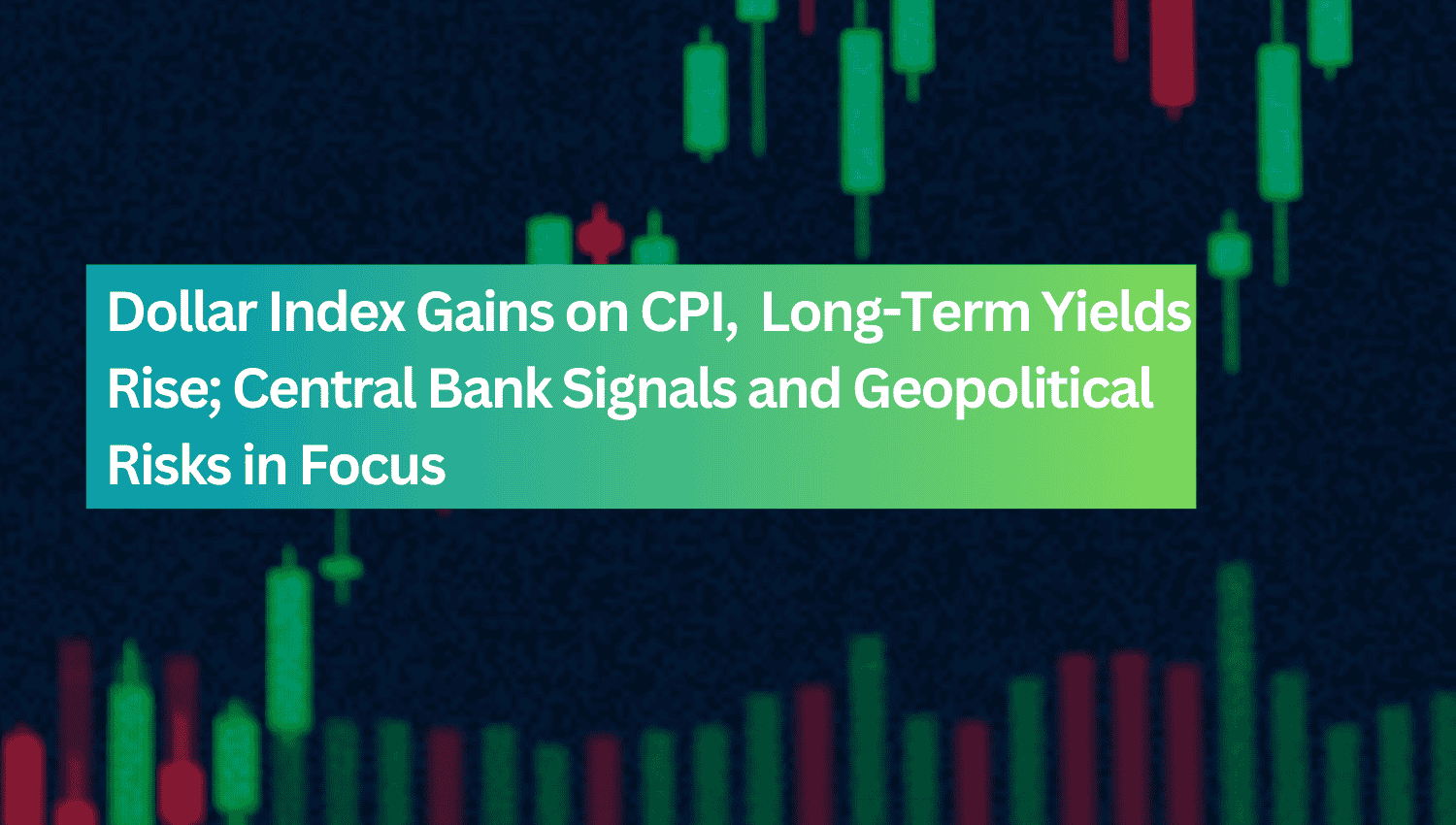Macro Outlook

Dollar Index Advances on Strong Treasury Yields
The dollar index rose for the ninth straight day, buoyed by rising long-term Treasury yields and increased demand for safe-haven currencies. This move followed the latest U.S. inflation data, which showed consumer prices rising slightly above forecasts in September, though the annual CPI growth slowed to 2.4%, indicating moderating inflationary pressures. Weekly jobless claims spiked to 258,000, the highest since early August, influenced by disruptions from adverse weather and strikes.
Mixed Fed Signals on Rate Policy
Amid these mixed economic signals, Atlanta Fed President Raphael Bostic suggested a pause in rate cuts at the upcoming November meeting, reflecting a cautious approach. However, Fed officials John Williams and Austan Goolsbee pointed to a likelihood of further rate reductions over the next year, citing easing inflation. This mixed outlook has contributed to nuanced market expectations regarding the Federal Reserve’s policy trajectory.
Global Developments: UK and Mexico Eye Rate Changes
In the UK, Finance Minister Rachel Reeves is considering a significant increase in capital gains tax rates, potentially impacting investor sentiment. Meanwhile, the Bank of Mexico signaled the possibility of continued rate cuts as inflation trends lower. The Canadian dollar weakened amid growing expectations for Bank of Canada rate cuts, further pressured by TD Bank's legal settlement over anti-money laundering violations.
Oil Prices Surge on Supply Concerns
The energy market experienced a sharp rise in oil prices, with a 4% increase driven by heightened U.S. fuel demand ahead of Hurricane Milton, concerns over Middle East supply disruptions, and signs of increased energy consumption in both the U.S. and China.
Outlook Shaped by Fed’s Cautious Approach
Looking ahead, market sentiment remains anchored to the evolving central bank stances and upcoming economic data releases. The Federal Reserve's cautious approach to interest-rate adjustments, as highlighted by Bostic’s preference for a pause in November, suggests that any future monetary easing will proceed gradually. However, the comments from Williams and Goolsbee indicate a potential trend towards longer-term easing if inflation continues to soften.
Treasury Yields and Equity Markets React
Treasury yields presented a mixed picture, with long-term yields firming while short-term yields edged lower, causing a steepening of the yield curve. The 2s-10s spread widened to +10.2 basis points, reflecting market expectations of a gradual easing cycle. The S&P 500 slipped by 0.27%, led by weakness in the industrial sector as investors adjusted their positions amid shifting interest rate expectations.
Commodities See Diverging Trends
In commodities, gold prices rose by 0.65%, benefiting from the drop in 2-year yields that bolstered its appeal. Copper prices increased by 1.02%, reflecting optimism that China may unveil new stimulus measures in its upcoming fiscal package announcement, which could support global demand.
Currency Markets: Dollar Strengthens Amid Mixed Data
The dollar continued its upward trend, supported by mixed economic data and a shifting interest rate outlook. The euro fell by 0.18% against the dollar, influenced by expectations of further easing from the European Central Bank. The yen showed some resilience, with USD/JPY down 0.32%, as investors reassessed risk sentiment and shifted back into safe-haven assets. The British pound declined by 0.22% amid reports of potential tax changes in the UK that could affect investor sentiment. Meanwhile, the Canadian dollar weakened further due to expectations of Bank of Canada rate cuts, compounded by negative news surrounding TD Bank's legal issues. The Australian dollar managed a modest gain of 0.19%, buoyed by hopes for supportive fiscal measures from China. Currency pairs involving the yen, such as EUR/JPY and GBP/JPY, saw sharper declines, reflecting the yen’s relative strength as global market mood turned more cautious.
Looking Ahead: Inflation and Central Bank Signals in Focus
The currency outlook remains closely tied to central bank communications and geopolitical developments, particularly the pace of U.S. rate adjustments and potential stimulus measures from China. If U.S. inflation continues to moderate, it may support the case for gradual Fed rate cuts, potentially easing upward pressure on the dollar. Conversely, stronger inflation or signs of economic resilience could sustain higher yields, maintaining dollar strength. The euro’s trajectory will depend on the ECB's decisions and regional economic stability. The yen may attract further safe-haven flows if geopolitical tensions persist, while the Canadian dollar's recovery could depend on the Bank of Canada’s stance on rate cuts. The Australian dollar will be sensitive to China’s policy direction, with any new fiscal measures likely to influence demand for Australian exports. Overall, the interplay of inflation trends, central bank policies, and geopolitical risks will be key in shaping currency markets, contributing to a potentially volatile trading environment in the near term.

